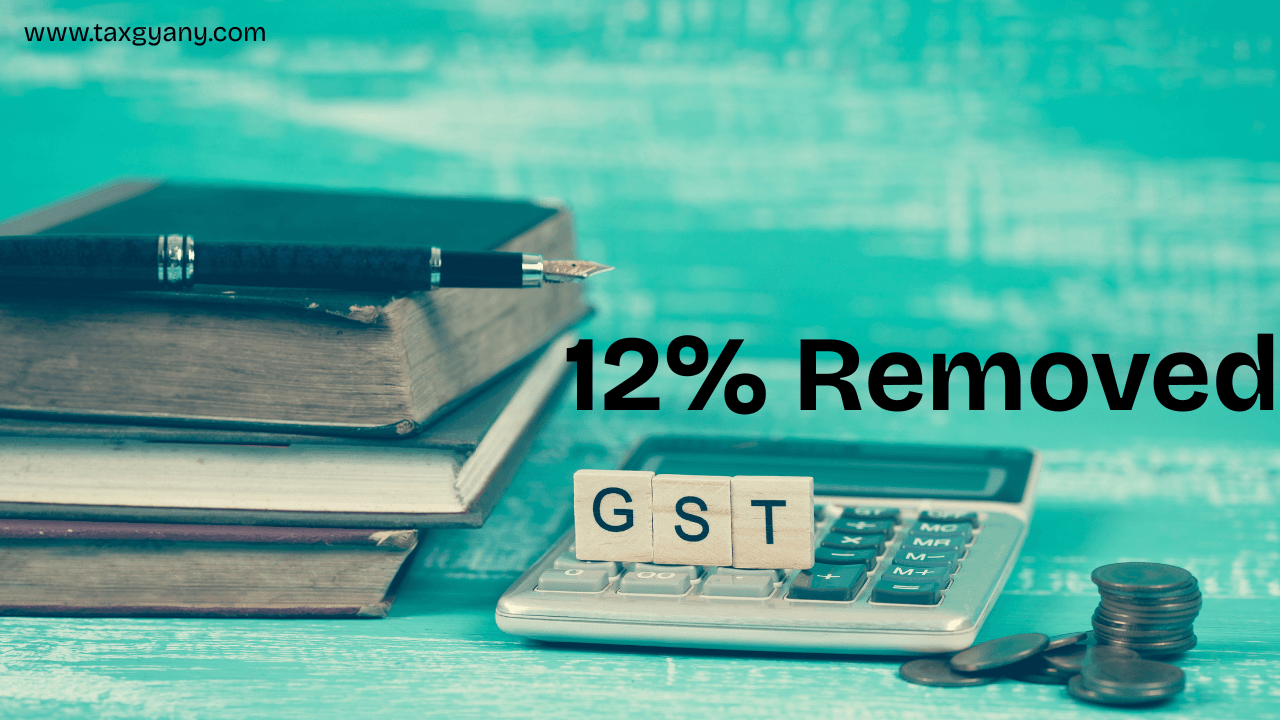GST Revamp on the Cards! PMO Clears Major Overhaul of Goods and Services Tax: 12% Tax Slab May Be Removed
India’s Goods and Services Tax (GST) system may soon see its biggest overhaul since its launch in 2017. With the Prime Minister’s Office (PMO) reportedly giving a green signal for a comprehensive revamp, the GST Council is now considering a major rejig in tax slabs, including the possible removal of the 12% slab.
This move is expected to simplify the tax structure, reduce disputes, and improve compliance. It is also seen as a step to make the tax regime more business-friendly and predictable.
In this blog, let’s understand:
✅ What the proposed GST revamp is about
✅ Why the 12% slab may be scrapped
✅ Expected changes in GST rates and structure
✅ Impact on businesses and consumers
✅ The roadmap for the GST Council
✅ Expert views and industry reaction
What Is the GST Revamp Plan?
According to multiple reports, the PMO has asked the Union Finance Ministry and GST Council to work on a major simplification of India’s GST structure.
The key aim is to move from the current complicated multiple-rate system to a more rationalised, simpler structure with fewer slabs.
Currently, India has four main GST slabs:
- 5% (for essential goods and services)
- 12% (for many items like processed foods, toiletries, certain electronics)
- 18% (for most standard goods and services)
- 28% (for luxury items, sin goods)
The government believes that the 12% slab adds complexity and overlaps with the 5% and 18% categories.
SEO Keywords Used: GST tax slabs, GST reform India, GST Council meeting, GST rate structure
Why Remove the 12% GST Slab?
Experts say the 12% slab has been a source of confusion and litigation. Many industries have disputed whether their products fall under 12% or 18%, leading to classification disputes and court cases.
By removing the 12% slab, the government plans to reduce classification disputes, ease compliance, and make the system more predictable.
For example:
- A mid-range product currently taxed at 12% may shift to 18% (slightly costlier), but with clarity.
- Alternatively, some essential items could be moved to the 5% slab to keep them affordable.
This change could streamline tax administration and improve revenue predictability.
Expected Changes in GST Rates
While no final decision has been made, discussions have focused on:
✅ Removing the 12% slab completely
✅ Redistributing items to the 5% and 18% slabs
✅ Reviewing items in the 28% slab, possibly reducing the list of items in it
✅ Considering merging the 5% and 12% slabs at an intermediate rate if necessary
The government is also keen to maintain revenue neutrality, meaning it doesn’t want the overall tax revenue to fall due to rate changes.
SEO Keywords Used: GST rate revision, GST 12% slab removal, GST Council decisions
Impact on Businesses
A simpler GST rate structure can reduce compliance costs for businesses.
✅ Fewer disputes over classification
✅ Easier billing and accounting
✅ Lower legal costs from reduced litigation
✅ Greater predictability for pricing strategies
However, businesses currently benefiting from the 12% rate may see input costs rise if their items move to 18%.
For example:
- Electronics, appliances, processed food items might get costlier.
- Industries will have to rework their pricing and supply chain strategies.
Impact on Consumers
For consumers, the impact will depend on where the items are moved:
✔️ If essential items move from 12% to 5%, prices will fall.
✔️ If standard items move from 12% to 18%, prices will rise.
Overall, the government hopes to minimise the impact on consumers by careful reclassification.
The aim is to balance:
✅ Simplicity and transparency
✅ Revenue needs
✅ Protection for essential items
GST Council’s Roadmap
The GST Council, chaired by the Union Finance Minister and comprising state finance ministers, is expected to:
- Review detailed data on revenue impact
- Consult with industry bodies
- Finalise a new rate structure proposal
- Build consensus among states
States will have a big say since GST revenue is shared. Many states have demanded rate rationalisation for years, but they will also want assurances on compensation for any revenue loss.
Expert Views
Many tax experts support the idea of a simpler rate structure.
Chartered accountants and GST practitioners say:
✅ A 3-rate structure (5%, 18%, 28%) would be simpler.
✅ It would reduce classification disputes, which are a big compliance headache.
✅ It would make GST more like global VAT systems.
But they also caution that careful planning is needed to avoid inflationary shocks.
Industry Reaction
Industry bodies have long demanded simpler GST rates:
- FMCG firms want essentials at 5%
- Electronics makers want clarity between 12% and 18%
- Small businesses want fewer rate changes over time
Industry groups are expected to lobby the GST Council to ensure key items remain affordable.
Conclusion: Big Reform Ahead
With the PMO pushing for reform, India’s GST system may see its biggest change in years.
Removing the 12% slab can:
✅ Simplify tax compliance
✅ Reduce disputes
✅ Improve transparency
But the GST Council will need to balance:
✔️ Revenue needs
✔️ State concerns
✔️ Consumer impact
Businesses and consumers alike should watch upcoming GST Council meetings closely, as decisions made now will shape prices, compliance, and the business environment for years to come.
Further Reading & Links
📌 Official GST Portal
📌 Latest GST Council Meeting Updates
📌 TaxGyany GST Services

